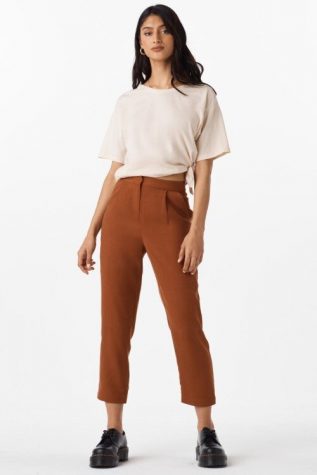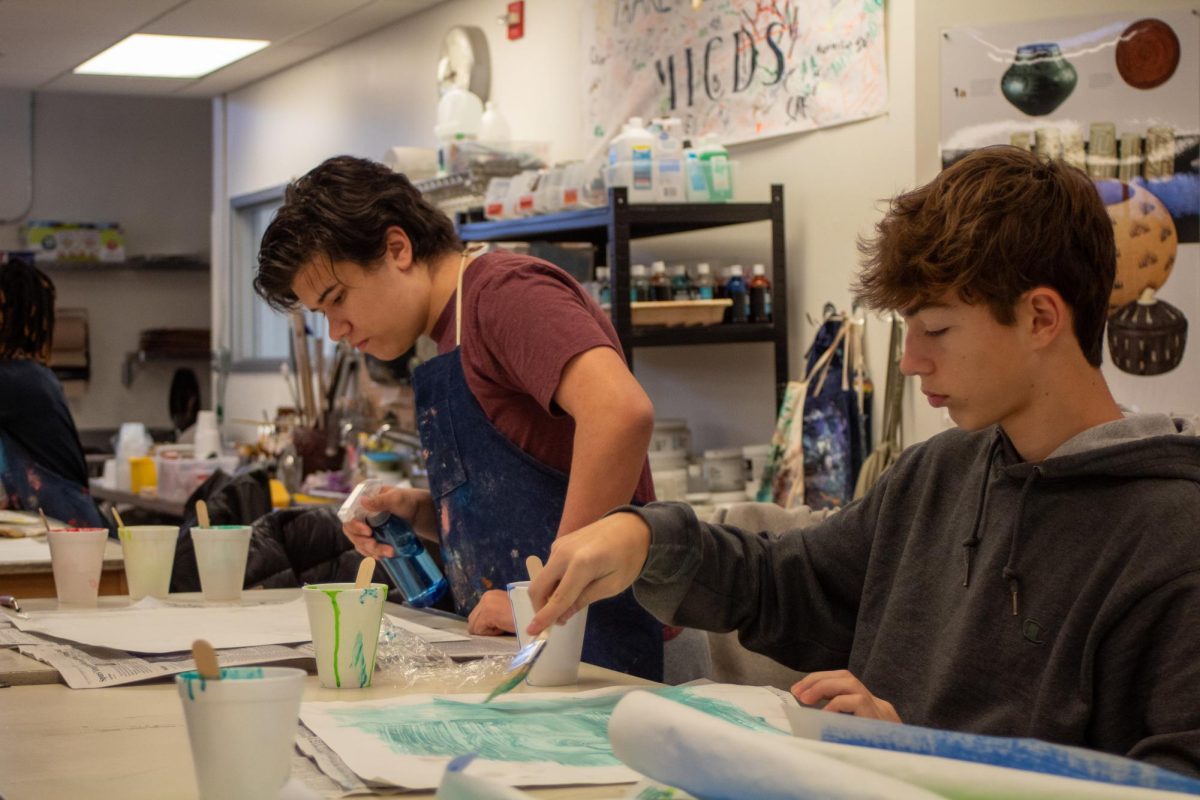The Unsustainability of the Fashion Industry and its Alternative: Sustainable Fashion
December 8, 2021
Fashion is something we all see everyday. It is in what we wear to school, what we see on TV, what we read in magazines and books and newspapers. But as much as the world today thinks about fashion- where fashion comes from is another topic entirely.
As unbelievable as it may seem, fashion has been in play for millions, if not billions, of years. In prehistoric times, it was common to fashion clothing out of leaves, vines, and fur for commonsensical purposes. For years, this trend continued and evolved until fashion became what it is today: a way to express one’s unique sense of style and to express their individuality.
But where do clothes come from? But more than that, who makes our clothes and what are they made from. Traditionally, clothing is made in factories by garment workers. These workers often face unfair labor conditions such as low pay, pests, and over fumigation. On the other hand, the production of the clothes themselves is increasingly harmful to the environment. Fast fashion is responsible for ten percent of the world’s carbon emissions and is a major contributor to global warming. There is a 50 percent expected increase in greenhouse gas emissions in the next ten years if the clothing industry maintains its course. Believe it or not, it takes about 2,000 gallons of water to produce a pair of jeans. To put that into perspective, that is enough water for one person to drink eight cups of water per day for 10 years. This is due to the fact that cotton growth, while a large market, is a water intensive industry. Luckily, many companies are working towards a way to grow cotton more sustainably. Fast fashion also causes water pollution issues because excess water from dyes is often dumped into bodies of water. Besides cotton, which is a natural fabric, there is also another classification of fabric called synthetic fibers. This includes things like polyester and nylon and acrylic material. These kinds of fibers are plastic based and often take up the majority of landfill clothing and are often non-biodegradable.
With the increasingly high demand for fast fashion, it is no surprise that many companies turn to cheap and easy materials to produce their clothing. Those kinds of textiles do not not decompose and if they do, take decades to biodegrade.
But this is where sustainable fashion, or eco-fashion, comes into the picture. Sustainable fashion is a process of promoting a change in fashion products that makes them far more sustainable and eco friendly. For garment workers, sustainable fashion also means fair pay, better factory conditions, and less illegal sweatshops. Most sustainable fabrics are made of recyclable materials and are made to last. They are natural and durable materials like wool, silk, and more eco-friendly cotton. These textiles are all-around great: environmentally friendly, long lasting, and fully biodegradable. Fair trade fashion is the perfect solution, but there is a problem.
The problem is that sustainable fashion is expensive. The costs that go into sustainable clothing makes it high-priced. Paying designers a fair wage for sewing combined with the difficulty of finding and sourcing natural materials that are eco-friendly make the cost of sustainable garments higher than regular clothing. High base costs compounded with retail markups make sustainable fashion basically inaccessible to the common public. But if you do have the resources and the ability to buy more sustainable clothing, it is best to guide your purchases to align with your ecological values.

While it may be seemingly impossible to achieve full sustainable clothing, the world would most definitely see a positive environmental impact from it. But until it becomes accessible to the general public, it is understandable that many do not have the resources to afford eco-friendly clothing.
If we begin taking steps and advocating for a greener fashion industry, we can slow climate change. Responsible spending encourages us to spend money on things we need. But as we shop and promote the fashion industry, it is important to remember that it is an investment in our identities as well as the future of our planet.




















